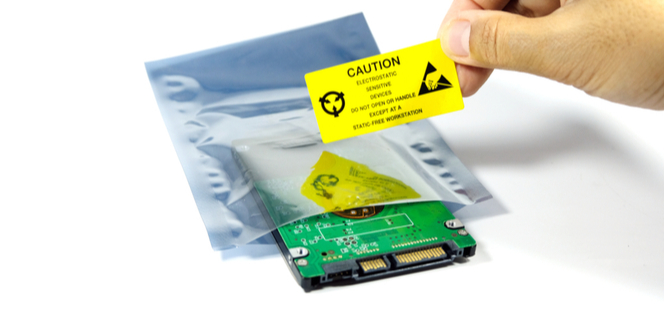Electrostatic Discharge Bags To Witness Drastic Innovation With Launch Of New Initiatives And Product Launches

4 Jan
2022
ESD (electrostatic discharge) bags are used to protect ESD-sensitive products such as electronics and electrical gadgets or equipment from static charges. Packaging materials made using polymers or metals are usually resistant to electrostatic discharge irrespective of the external environment. Business sectors such as electrical and electronics, automobiles, aerospace, manufacturing, and healthcare rely on electrostatic discharge bags. Increase in the use of military equipment across the world, such as fire control and navigation systems has intensified the requirement for ESD bags and pouches.
There are a few reasons that drive the growth and create opportunities for the market players in the ESD industry such as lower manufacturing process cost of ESD bags and their antistatic properties. As per the report published by Allied Market Research, the electrostatic discharge bags market is expected to reach $6.6 billion by 2030, manifesting a CAGR of 7.4% from 2021 to 2030.
However, the COVID-19 pandemic has restricted operations in the consumer electronic sector. The production of electronic devices was hampered owing to lack of labor, interrupted raw material supply, and strict travel restrictions. This has affected the production of electronic devices, causing a decline in the demand for electrostatic discharge bags. However, the market is expected to recover from the pandemic effect shortly. The packaging sector is expected to grow in the future and the demand for electronic items such as smartphones, laptops, and tablets is on rise, which will increase the demand for ESD bags.
On the other hand, with innovative product development, mergers & acquisitions in the market, new revenue opportunities are created for players.
Recently, Siemens, a global technological powerhouse and industrial manufacturing company has extended its electronic design automation support for Samsung process technologies. Siemens Digital Industries Software has made several electronic design automation (EDA) products compliant with the recent versions of Samsung Foundry’s advanced processes. This takes care of a variety of Siemens’ solutions that focus on packaging, electrostatic discharge rules, and integrated circuit (IC) design in the cloud.
It is crucial to pay attention to the packaging material of ESD bags. The market has witnessed the emergence of multiwall carbon nanotubes for electrostatic discharge applications over carbon black. Several companies such as StopStatic that focus on developing several anti-static or electrostatic discharge items for multiple industrial into ESD bags. Such innovations in the industry would open new opportunities in the ESD bags industry.

Koyel Ghosh
Author’s Bio- Koyel Ghosh is a blogger with a strong passion and enjoys writing in miscellaneous domains, as she believes it lets her explore a wide variety of niches. She has an innate interest in creativity and enjoys experimenting with different writing styles. A writer who never stops imagining, she has been serving the corporate industry for the last five years.
Avenue: Entire Library membership of Allied Market Research Reports at your disposal
- Avenue is an innovative subscription-based online report database.
- Avail an online access to the entire library of syndicated reports on more than 2,000 niche industries and company profiles on more than 12,000 firms across 11 domains.
- A cost-effective model tailored for entrepreneurs, investors, and students & researchers at universities.
- Request customizations, suggest new reports, and avail analyst support as per your requirements.
- Get an access to the library of reports at any time from any device and anywhere.
Related Post
-
How are Submarine Cables Transforming Global Connectivity with Enhanced User Experience?
-
Endoscopy Procedures: Transformations in Techniques and Applications
-
AI-Powered Video Analytics: How the Product Actually Works for enterprises
-
Painting Robots: Transforming Precision Coating and Creative Applications
-
Innovations in Pharmacovigilance Systems Advancing Patient Safety
-
Understanding Edge Security: Keeping Data Safe Near the Source
-
Exploring the Use and Advancements of 3D Laser Scanners in Professional Applications
-
Reinforcing Industrial Controls with Smarter Tools and Training








